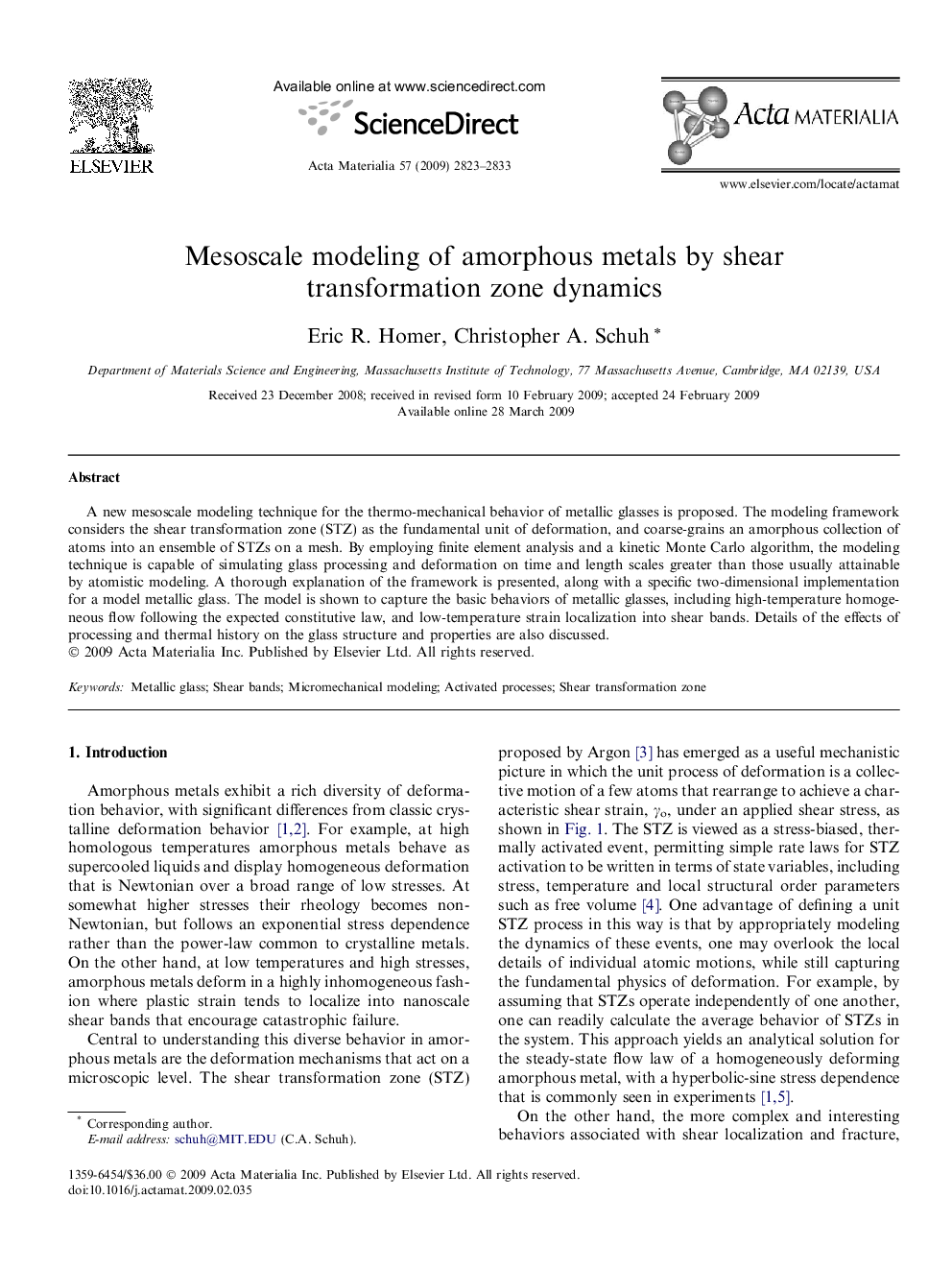| Article ID | Journal | Published Year | Pages | File Type |
|---|---|---|---|---|
| 1449401 | Acta Materialia | 2009 | 11 Pages |
A new mesoscale modeling technique for the thermo-mechanical behavior of metallic glasses is proposed. The modeling framework considers the shear transformation zone (STZ) as the fundamental unit of deformation, and coarse-grains an amorphous collection of atoms into an ensemble of STZs on a mesh. By employing finite element analysis and a kinetic Monte Carlo algorithm, the modeling technique is capable of simulating glass processing and deformation on time and length scales greater than those usually attainable by atomistic modeling. A thorough explanation of the framework is presented, along with a specific two-dimensional implementation for a model metallic glass. The model is shown to capture the basic behaviors of metallic glasses, including high-temperature homogeneous flow following the expected constitutive law, and low-temperature strain localization into shear bands. Details of the effects of processing and thermal history on the glass structure and properties are also discussed.
